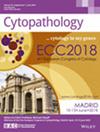Diagnosing Malignant Epithelial Neoplasms of the Lung in Cytological Specimens: Cytomorphology, Ancillary Studies and Management
Abstract
The World Health Organization's (WHO) Reporting System for Lung Cytopathology intends to standardise the diagnosing and reporting of cytology specimens from the lung and aims at enhancing the communication between clinicians and (cyto)pathologists. It is closely connected to the 5th edition of the WHO Classification of Thoracic Tumours. The system includes five diagnostic categories, among them the ‘Malignant’ diagnostic category that incorporates both primary malignant tumours and metastases. Advancements in bronchoscopy have notably improved the diagnostic capacity of cytological specimens that represent the sole source of tumour material in approximately 40% of all lung carcinoma cases. An accurate diagnosis of malignancy and treatment-guiding classification into specific tumour types and subtypes can reliably be achieved with cytology specimens. They additionally serve as an excellent source for predictive immunocytochemistry (ICC) and molecular testing for targetable oncogenic alterations. This review article provides an overview of the key cytopathological features defining the ‘Malignant’ category of the WHO Reporting System for Lung Cytopathology for non-small cell carcinomas, neuroendocrine neoplasms and other specific carcinomas and malignancies which can be encountered in cytological specimens of the lung. It further describes the application of ancillary techniques, such as ICC and molecular testing, that have been successfully incorporated into different cytological sample types using various preparation methods.


 求助内容:
求助内容: 应助结果提醒方式:
应助结果提醒方式:


